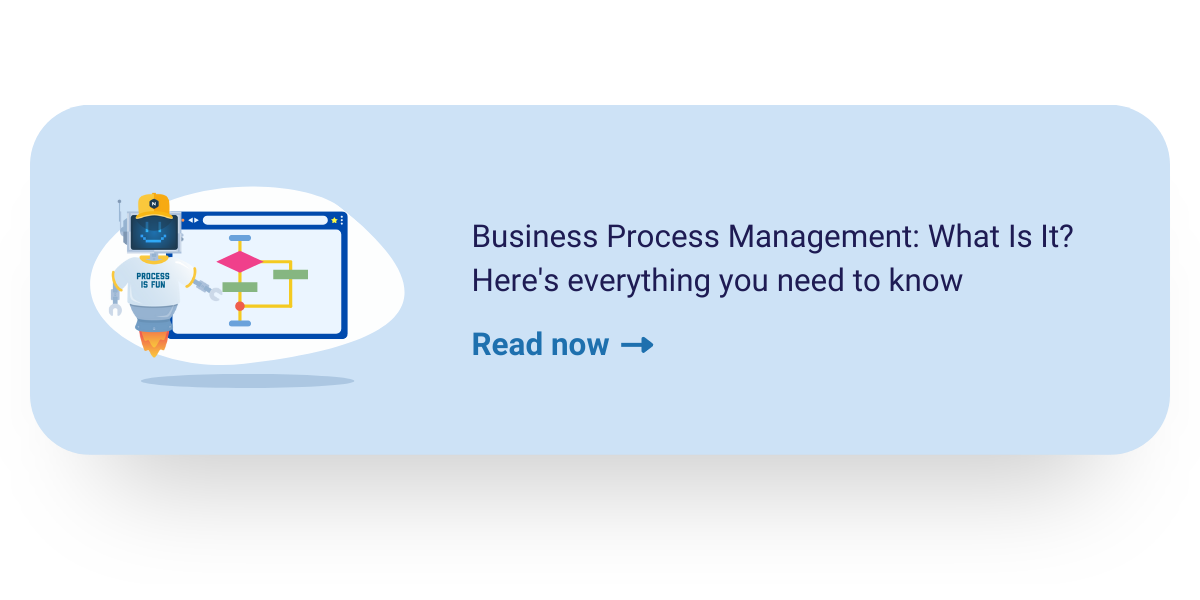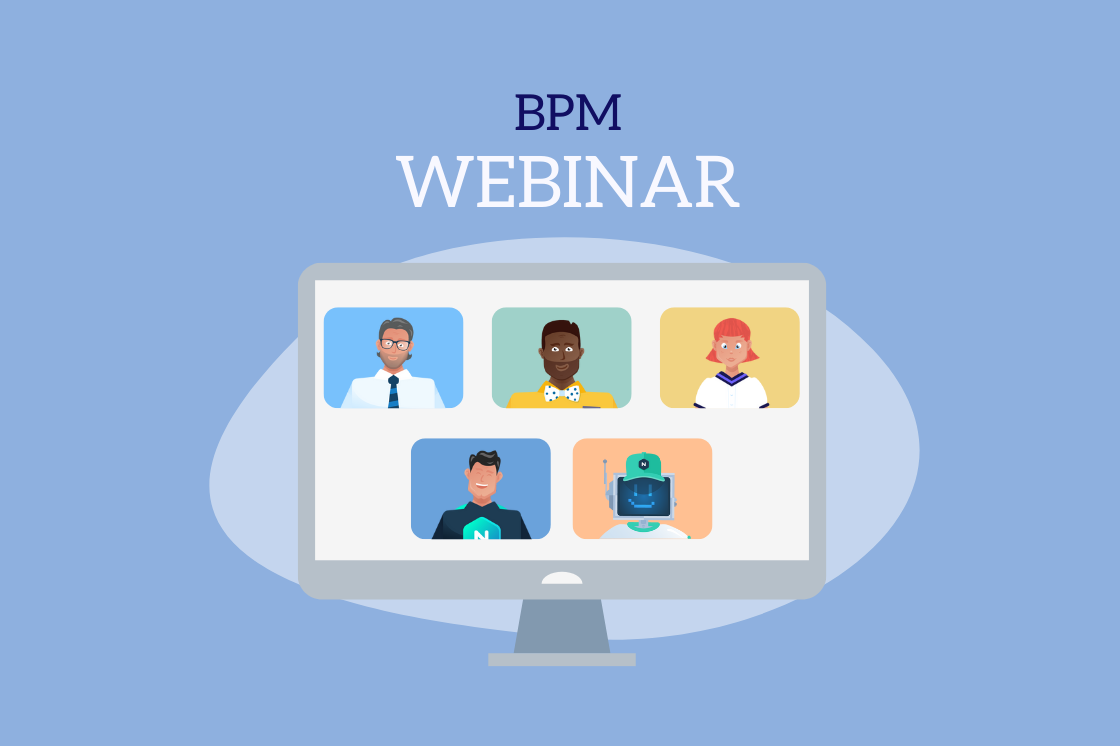Use BPM to create a Customer First Organization
There are a lot of companies vying for your business. The internet provides endless choices, and the competition is just one click away. When designing a product or service, spend time walking in your customer's shoes. Starting from your customer's perspective will help you improve the customer experience.
What do we mean by a "customer first" organization? It's easy to think it equals customer service, but it goes well beyond that.
A "customer first" organization looks at everything they do through its customer's eyes. Every customer touchpoint must be considered, from product design to marketing, sales, logistics, and finance.
It doesn't matter how good your product is. Customers will go elsewhere if you have a broken purchasing process or a confusing marketing message.
BPM (Business Process Management) is an excellent framework to help you become a "customer first" company. Learn more about the additional benefits of a Business Process Management program.
BPM provides the tools to:
- Discover existing processes
- Model processes
- Optimize and improve processes
- Automate processes
- Manage processes
Process Discovery
Many organizations rely on informal processes and "tribal knowledge" to get work done. This practice may work, but it's inefficient and not scalable. You also risk losing knowledge when key staff leaves the company.
Process discovery is about gaining an understanding of your current business processes. Capture this information by using a combination of manual or automated (process mining) techniques.
Becoming a customer-centric company starts with understanding how you interact with existing and potential customers.
Creating a customer journey map is a great starting point. This map visually shows how a customer interacts with your company. There are several things you need to consider when creating these maps.
- Identify your customer personas. Each persona represents a different type of customer. Examples include; a new customer, a returning customer, or a customer seeking support or a refund. Each customer's path will be different, and you want to optimize each.
- What motivates your customers? It's essential to understand your customer's needs and desires. Are they looking to buy a TV or an in-home cinematic experience? Understanding your customer helps you tailor the experience.
- How do these personas currently interact with you? For example, in-person, via the website, phone, email, or social media. Each of these interactions starts a workflow, and capturing all of them is essential.
- What are the touchpoints? Identify which departments and roles are involved and how. Determine if they are on the critical path or need to be involved.
- How long does each interaction take? There are two key measurements vital to eliminating bottlenecks. The first is the time to complete the entire process. It would help if you also captured the time it takes for every step in the process.
- How do people feel about the interaction? You can use employee and customer data to determine satisfaction. Are customers pleased, or is there room for improvement?
Check out this article: Understand your processes through identification & process discovery.
Customer journey maps vs. process maps
Customer journey maps start with the customer's needs and expectations and focus on their experience and emotions. These maps help you put the customer front and center. On the other hand, process maps tend to be created from the company's perspective and focus on the execution of tasks.
It would be best to have customer journey and process maps to improve the customer experience. A customer journey map is an excellent tool for telling you what you need to do, while a process flow is essential for process execution and driving automation.
You can use a combination of interviews and workshops to perform process discovery. Bring together people familiar with the process and have them walk you through the steps. Use customer satisfaction data, surveys, and process metrics to evaluate the effectiveness of the process.
Process Modeling
Process modeling is the creation of a visual representation of your processes. Modeling goes hand and hand with Process Discovery. Sometimes called process mapping, this exercise is vital for several reasons.
- Provides a document to educate staff on their roles and responsibilities.
- It is a baseline for driving process improvement.
- The process maps guide process automation.
Process modeling is essential for any company looking to improve the customer experience. Our article "Introduction to Process Mapping" discusses process modeling techniques." You can also check out our guide for selecting a business process mapping tool.
Process Improvement
Customer First organizations never take their eye off the ball. They are constantly innovating and experimenting to improve the customer experience. They use customer feedback and process metrics to solve problems and investigate potential solutions.
Process improvement goes beyond reacting to a problem. It needs to be part of an ongoing process management program. There are a variety of methodologies that can assist in process improvement. Check out some of these tools in our Business Process Management Tool Box article.
Business Process Automation
Automating your business processes is one of the best ways to improve efficiency and provide a consistent customer experience. This automation can be a simple change to an existing workflow or using Business Process Management to drive a significant Digital Transformation. In either case, process automation needs to be driven by your customer journey maps and process flows.
Some organizations, especially the ones following an Agile development methodology, make use of User Stories to drive automation. User Stories describe a software system feature from the user's perspective. They are typically written as "a persona, wants or needs something, for the following benefit ." For example, as a customer, I want a "one-click" checkout for convenience.
There is a clear relationship between Customer Journey Maps and User Stories. The Customer Journey Map helps uncover the customer needs. User Stories translate those needs into product features. User stories should've mapped against each step in the process.
At Navvia, we call this approach "Process Driven User Stories ."This approach maps customers' needs to the automation solution you are developing.
Check out this webinar on process-driven user stories to learn how to apply this approach in your organization.
Process Management
This article outlined several ways Business Process Management can help you become a Customer-First organization. But it's essential to note that these are not one-time tasks. Your journey to becoming a customer-first organization never ends. If you take your eye off the destination, you will lose your way.
Your processes require ongoing management and continuous improvement. You need to develop objectives for all your processes and then establish metrics by which you can measure success. Processes need to have owners that are held accountable for the performance of their processes. Processes need to be continually reviewed and adjusted to meet changing needs.
Having your staff follow the processes is essential. This governance requires sound Business Process Change Management practices focused on your people. Check out this article on "The importance of Business Process Change Management."
Applied Design
Applied Design is another effective method for building a customer-centric organization.
Applied Design is a customer-centric approach that emphasizes experimentation and prototyping. It involves actively listening to customers and using empathy to define their needs.
This approach is very hands-on and interactive, promoting experimentation and prototyping.
The process starts with defining your customer's needs, which you do by using empathy and actively listening to them.
These needs are then brainstormed to develop potential solutions that turn into prototypes.
The prototypes are tested, and failures are welcomed as they provide opportunities to learn and improve the design.
The iterative process of testing and refining the prototypes continues until the desired level of customer satisfaction is achieved.
In Applied Design, the focus is always on the customer, creating products and services that meet or exceed their needs and expectations.
The successful prototypes become releases. Check out this article on design thinking.
Whichever approach you take, you aim to translate customer needs into solutions constantly undergoing improvement.
Becoming a customer-first organization can truly differentiate you from the competition. Small companies rely on the staff's passion, knowledge, skills, and hard work, but this isn't scalable. Business Process Management can give larger companies a repeatable approach to outperform the competition.


